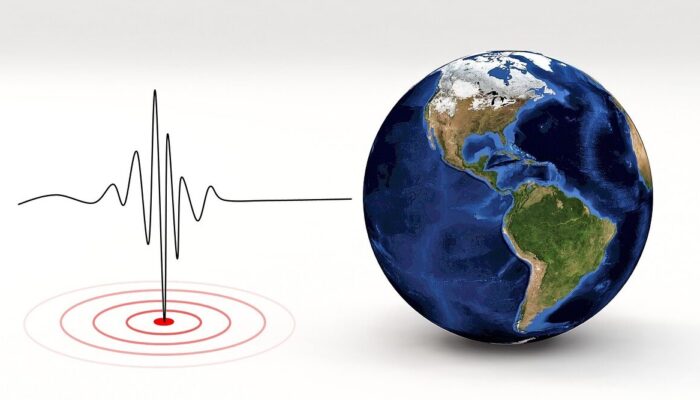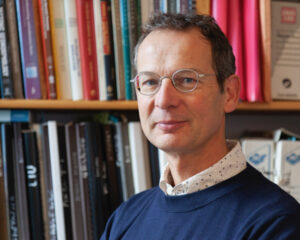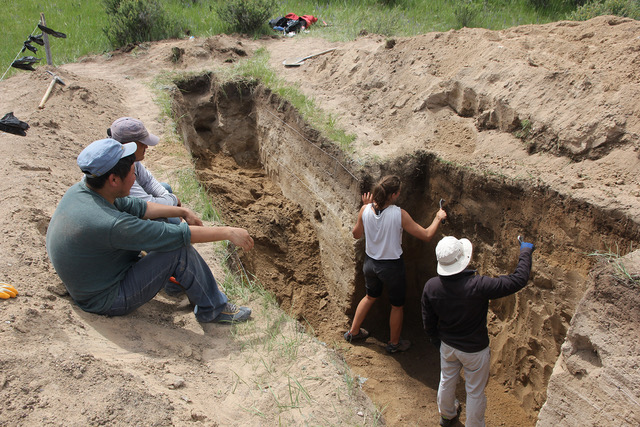
Hi Yann, first of all, congratulations on the Stephan Mueller Medal, and it is my pleasure to interview you!!
To all my readers, the Stephan Mueller Medal is one of the prestigious medals awarded for exceptional contributions to tectonics and structures by the European Geosciences Union (EGU).
Dr Yann Klinger wears many hats, he is a seismologist who studies recent and past earthquakes and is also an expert in space seismology.
Let us learn more about his research and what motivated him towards seismology/paleoseismology.

Dr Yann Klinger
I indeed am known by many as a paleoseismologist, but in fact, this is only a part of my activity. I would qualify myself more as an earthquake scientist; I am interested as much in modern earthquakes as in past earthquakes. My initial training was in seismology and it was only during my post-doc time that I started to work in paleoseismology. I believe my main motivation is to understand the earthquake cycle along fault systems. To achieve that, on the one hand, you need to understand how modern earthquakes propagate along complex faults, including how they accommodate the accumulated deformation, and on the other hand, you also need to see if what we can learn from recent earthquakes is truly representative of the general fault behaviour. That is where paleoseismology is critical.
You have worked a lot on understanding earthquake rupture propagation, and segmentation as described in your (Klinger et al., 2010), can you discuss some of the reasons for fault segmentation and how it affects earthquake rupture propagation in different tectonic settings?
I started to be interested in fault rupture during my post-doctoral time as I had the opportunity to work on the 1999 Izmit earthquake. And then, right after I got a permanent position in 2001, I got to work on the details of the 2001 Kunlun rupture. This was the first time we could image a surface rupture from space with a high-resolution optical satellite. During this meticulous work of mapping a modern surface rupture, I started to wonder what would control such rupture and the overall geometry of the ruptures. During the following years, accumulating more data about surface ruptures allowed me to move from the specifics of a rupture to more general considerations. It was also a time when anyone would talk about fault segmentation, probably with his/her acceptance.
Hence, my goal has been to work out a sense of segmentation that would be meaningful for everybody and, based on some physics, to go beyond only a vague description term. That is how I made this connection, at least for strike-slip faults, between fault segmentation and the thickness of the brittle crust. In this way, the concept of segmentation is related to a first-order geometrical parameter. It can be used to scale ruptures and design earthquake scenarios in seismic hazard studies. My recent works, based respectively on analogue experiments and numerical modelling, have confirmed a straightforward relationship between the thickness of the brittle layer and the length of the fault segment.
Could you talk about your “MicMac” tool, which is available in the public domain? What inspired the development of this tool, and how does it contribute to a better understanding of earthquakes?
The MicMac tool has a long history. It is a tool that was initially developed in photogrammetry by the French mapping agency for their use in building the topographic maps of France. Now, the current MicMac software package results from a long-lasting collaboration between colleagues from the French mapping agency and us to adapt this tool to satellite images, whose principle of acquisition could be quite different from classical airborne images and to the measurement of ground deformation. It is still an evolving tool. Using MicMac, it has been possible to measure ground deformation and, more especially, horizontal deformation close to the fault zone, something that was not doable using InSAR. Hence, the development of this tool has opened a new avenue to explore the processes related to deformation in the fault zone. In recent times, taking advantage of the very high resolution, we have been able to explore new processes of deformation, the distributed deformation, that come to complement the localized deformation, pushing us to reassess the way we see ground surface rupture during large earthquakes.

Dr. Yann Klinger, accompanied by his students Solene Antoine, Yacine BenJelloun, and Gazorig Davaasuren, cleaning the trench wall with scrapers in Mongolia.
Why do you think it is important to study earthquakes today?
Beyond the obvious goal of being able to predict an earthquake one day, very unlikely for most of us, to me, a good reason to study earthquakes today is that it is interdisciplinary, although everyone is eventually developing his/her expertise, it is a field where you can collaborate with a lot of people with different expertise, and this is priceless. Thus studying earthquakes is a great opportunity to learn everyday a lot about many different fields of earth sciences.
I agree with you about the importance of studying earthquakes, can you talk about some of the current challenges you observe in earthquake science, and how can we inspire the younger generation to engage in this field of study?
In my opinion, a major difficulty in embracing the complexity of the earthquake cycle on various fault systems is the lack of reliable data. Hence, the time spent collecting high-quality data should be valued highly. Today, however, collecting data is not always well considered and can be frustrating when the metric is the number of publications. Collecting high-quality data is time-consuming and, in many contexts, difficult. Still, I would encourage every scientist to spend some time acquiring his/her data in the field, in the lab, or processing remote sensing data. Once you have been through that step, you are probably better armed to look at modelling as you get to trust the observation better. In addition, observations are so diverse that they can generate an endless source of inspiration to understand the fundamental processes at play.
Thank you for engaging in our discussion about your research and graciously sharing your insights on the significance of studying earthquakes.
Reference
[1] Klinger, Y.: Relation between continental strike-slip earthquake segmentation and thickness of the crust, J. Geophys. Res.-Sol. Ea., 115, 7306, https://doi.org/10.1029/2009JB006550, 2010
Post edited by Soheil Mohammadi and Navakanesh M Batmanathan
